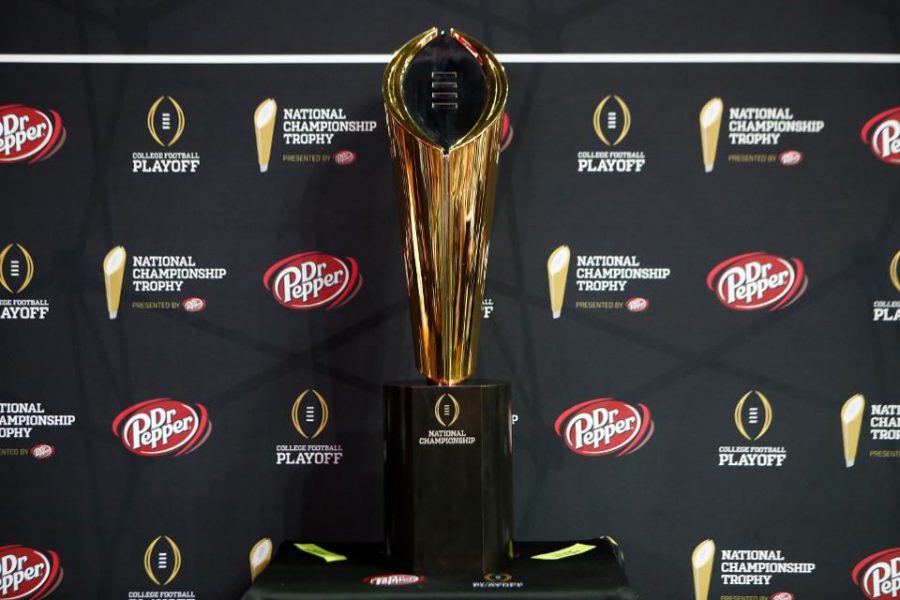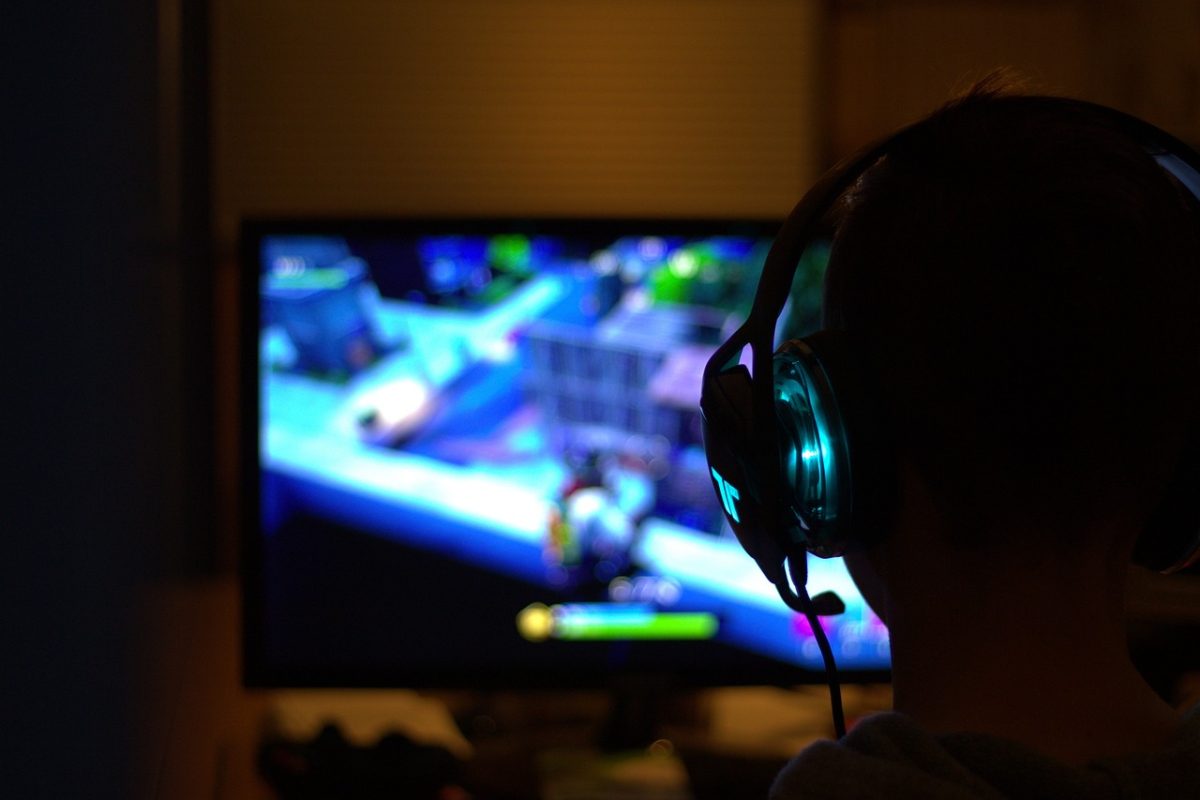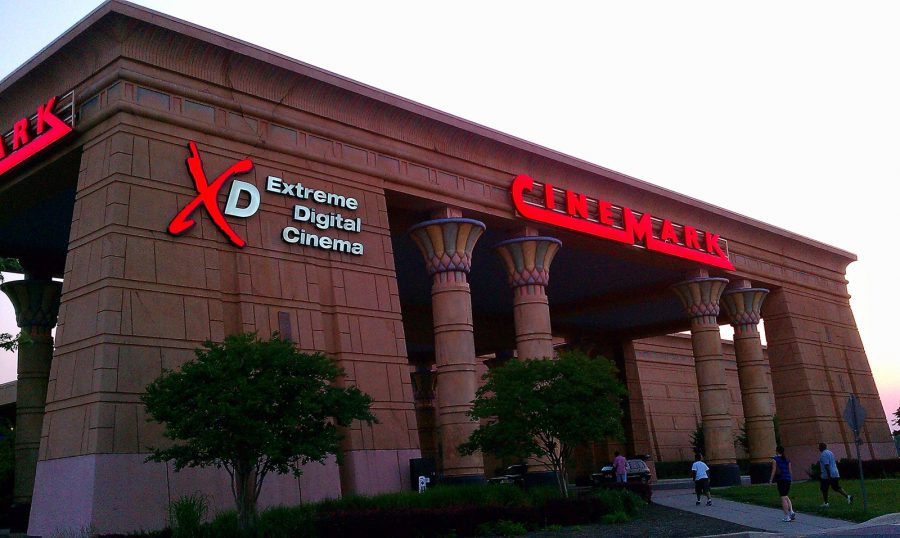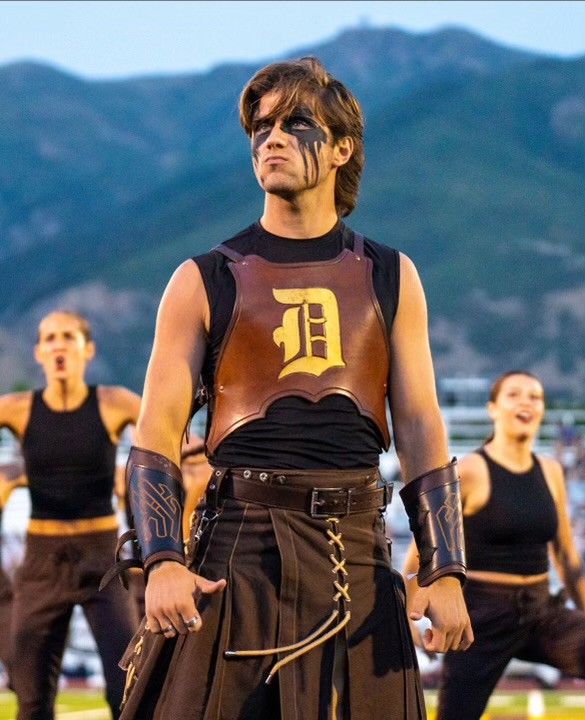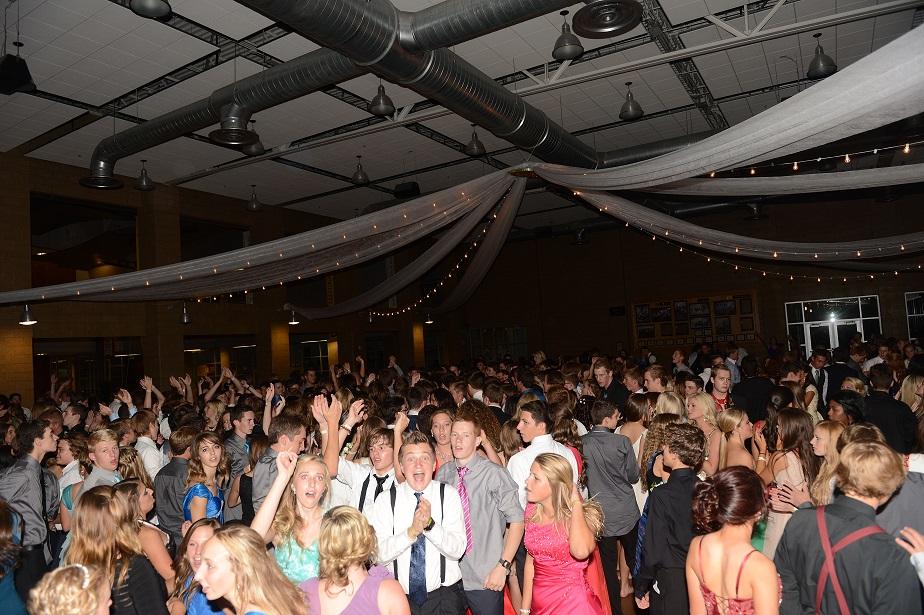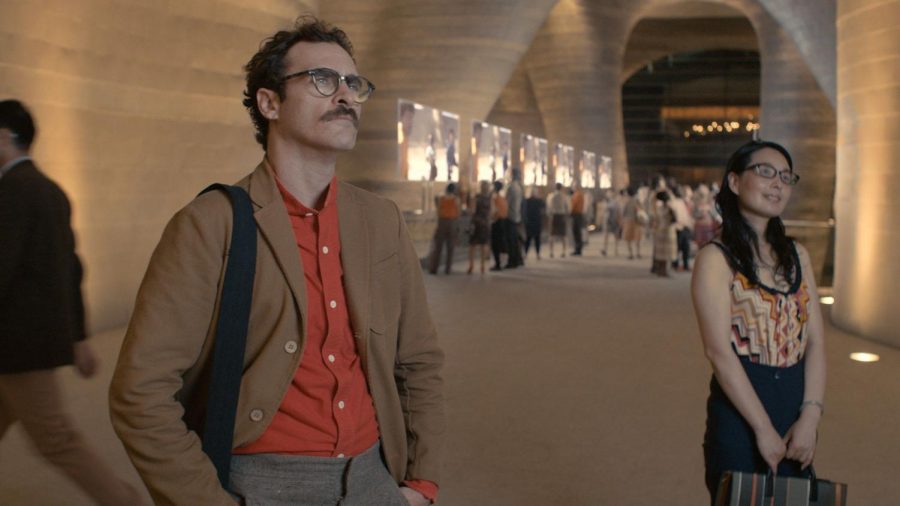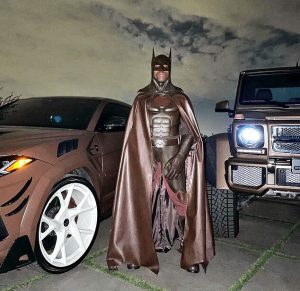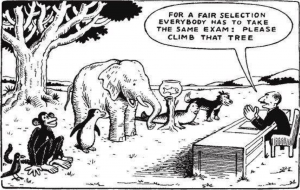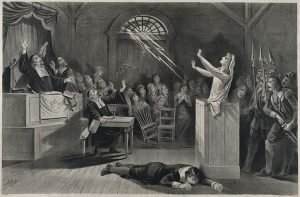The Futuristic Lyrical Loneliness of ‘Her’ – Movie Review
April 12, 2021
‘Her’ is my favorite movie right now. I’m sure its spot will be taken soon enough, but for now, the crown belongs to Spike Jonze’s beautiful and contemplative celebration of love. But it doesn’t just celebrate the positives of love, and it doesn’t wallow in the negatives. It has a compassion and an appreciation of every step of a relationship. It explores the joy that a connection to another individual can bring, as well as the harsh realities and constant struggles that make up the act of loving someone. The film has a kind of lyrical loneliness that has the supernatural ability to bring those who come into the film with a good mood down, and wrap those that feel lost or hopeless in a warm blanket that tells them that they’re not alone, and that what they’re feeling is beautiful in its own way. I don’t believe that there is a person on Earth who can watch this movie and not get something out of it that feels personal. I’ve watched this movie 5 times since I entered my first relationship, and each time, the film meant something different to me. And each time, it has helped me immeasurably. Through this review, I hope to pin down why this movie is so effective, and attempt to convey my appreciation of this film’s existence.
‘Her’ is a 2013 film that is directed and written by Spike Jonze (Being John Malkovich, Adaptation). It takes place in the not-so-distant future and follows Theodore Twombly (played by the brilliant Joaquin Phoenix), a very lonely gentleman that works as an author of love notes for other couples. He is in the process of divorcing his wife (Rooney Mara), when he falls in love with an advanced operating system named Samantha (voiced by Scarlett Johansson). It’s a simple premise, but it is filled with so many brilliant ideas and unadulterated passion. Passion for the art of film, as well as for the human race.
The future that it portrays isn’t a bleak, Orwellian vision like so many films are. It also isn’t a utopia with outlandish tech and distant characters. The changes to society that the film showcases aren’t conveyed through a title crawl or a montage of every step that led to this future, it is filled with little innovations and differences that exist in the background and are used by the characters in natural ways. This Los Angeles is car free (with the exception of a cab late in the film), leaving the roads to the people. The buildings are all unique and colorful. The tech isn’t all holograms and super extravagant messes of devices, instead it seems to be the natural evolution of our current technology.
The fashion isn’t Back to the Future Part 2 clothing, it instead predicts fashion trends and executes them with such a level of professionalism that it inspired a fashion trend in the real world. It’s the little things. Pastel colors are all the rage, high-waisted pants are everywhere, button-up shirts without a collar are trendy, and mustaches seem to have made a resurgence. They don’t have visors, and they aren’t wearing huge spiky silver shoulder pads. It’s gorgeous.
But everything in this movie is gorgeous. The beautiful fashion and architecture perfectly complement the masterful cinematography. The cinematography in this film is perfect. It switches between beautiful wide shots during the parts of the movie where Theodore is completely aware of his surroundings. When he’s going through his day to day, surrounded by hundreds of others just like him, or when he is able to appreciate his surroundings, be it the beach, the subway, or a mountain top. But when he is lost in his mind, the film uses these intense and long closeups of Theodore’s face that give a feeling of claustrophobia as well as the ability for the audience to read every little movement his face makes. There are long scenes that are just conversations and personal moments that are made so much more effective by the restraint of the camera. At one point, the screen even goes dark, and all you hear is the intense and personal moment between Theodore and Samantha. These scenes would fall on its face with a bad, or even mediocre performance at the center of it, but Joaquin Phoenix kills it.
“I think anybody who falls in love is a freak. It’s a crazy thing to do. It’s kind of like a form of socially acceptable insanity.”
This film looks at love as a beautiful and complex thing. It explores what makes a relationship healthy and beneficial to both partners. It fully acknowledges and embraces the fact that there is no catchall for relationships. It’s different for everybody, and the joy of it is truly connecting to your partner and discovering what you both need. In the case of Theodore and Catherine’s (his ex-wife) relationship, they provided a very safe creative environment in which they supported each other’s writing. In the flashback scenes that show them before the divorce, they treat compassion and intimacy differently than any other couple in the film. The way Theodore acts with Catherine is wildly different than how he acts with Samantha and the lady he goes on a dinner date with early in the film. There is a morbid element to the affection shown within their relationship. The scene that comes to mind features Catherine pinning a laughing Theodore on the floor while saying,
“I’m going to kill you. I’m going to f****** kill you. I love you so much, I’m going to f****** kill you.”
It’s a scene that stands out as a strange interaction, but it suits the character of Catherine. She grew up in a very strict house where nothing that she did was ever good enough. I could see how her upbringing could result in her strange way of expressing affection. And this isn’t the only portrayal of morbid affection. We get to hear a good number of love letters that Theodore writes, and there is one that Samantha singles out as her favorite that is surprisingly violent. It fits in with the film’s theme of obscenity and perversion. The film is overall very sweet and tender, but there are moments that really take you by surprise and show how differently this future views these ‘taboo’ things. A vulgar video game character and a scene involving a surprise cameo from Kristen Wiig and a dead cat come to mind. I read these scenes as showing how a more sophisticated and progressive culture has caused more… unique… sexual desires to be created. It asks you to compare that with the other depictions of love that are very tender and emotional. This is a very small part of the film, but it is one that has always intrigued me.
This film’s perspective on love has helped me develop my own ideas about relationships. The film makes the case that every relationship matters. Just because one ends does not mean that it wasn’t worth it. In a good relationship, both partners will help the other grow, and they instill a part of themselves into the other. People are always growing and evolving, and growing apart is only natural. I don’t think trying to find ‘the one’ is very helpful. I think it’s best to evaluate the worth of a relationship based on the now instead of the future. A relationship where both people nurture and support the other is invaluable, and you can learn a lot about yourself through the eyes of a significant other. The world is a terrifying place, and for me, the idea of relationships makes my future seem less daunting.
The last thing I’d like to talk about is the film’s soundtrack. The film’s score was created by the band Arcade Fire, (one of my favorites) and it was nominated for an Oscar. It is my favorite soundtrack of all time, as well as one of my favorite albums, period. The gorgeous synthesizer perfectly complements the masterful piano. Songs like ‘Photograph’, ‘Divorce Papers’, and ‘Song on the Beach’ are just… *chef kiss*, and they have inspired me to learn piano. For some reason, the album hasn’t been available on streaming until now. On March 19, they have released the soundtrack on streaming platforms and vinyl. I highly recommend you give it a listen.



